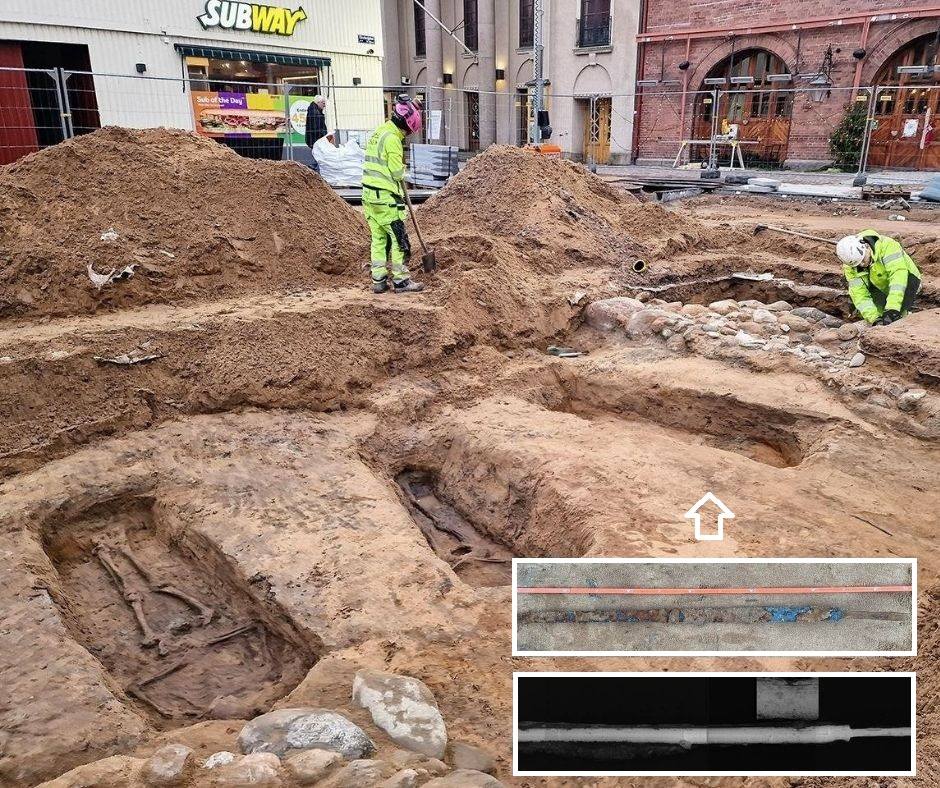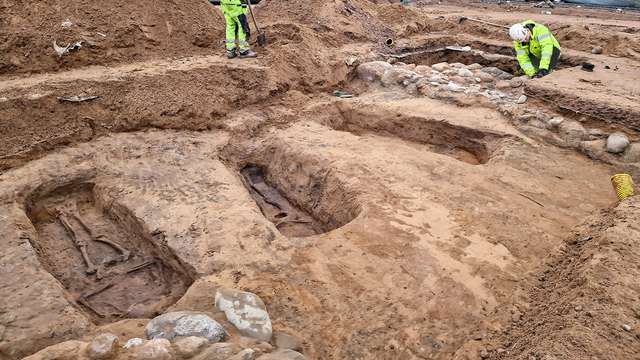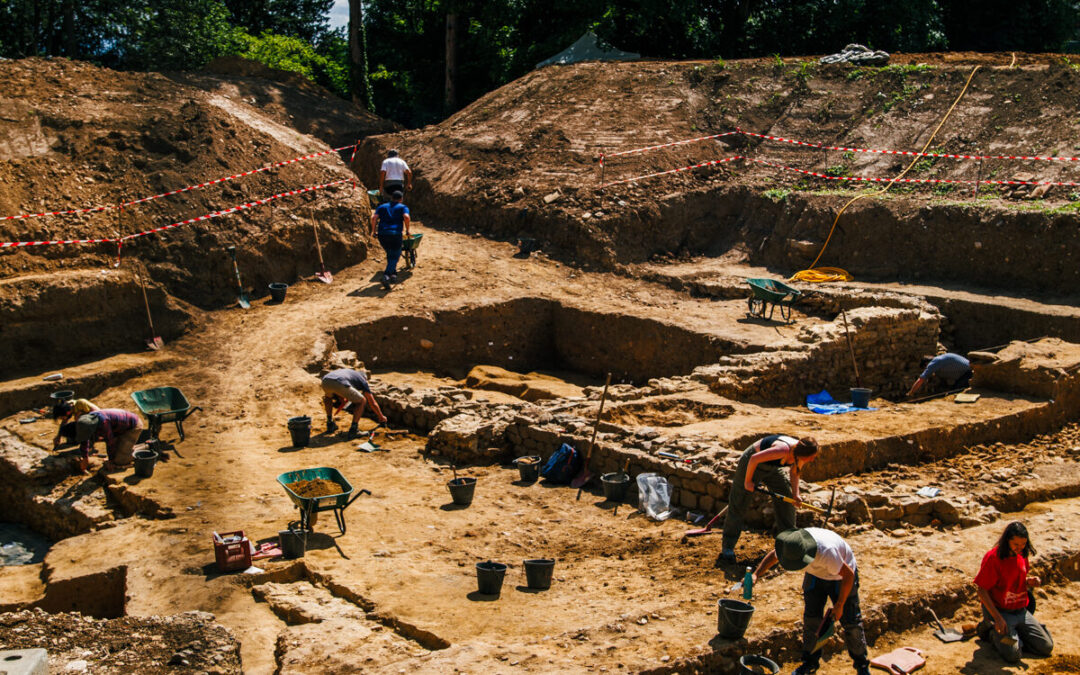4-Foot Sword Unearthed in Medieval Grave, Sweden

In the historic heart of Halmstad, Sweden, archaeologists have made a discovery that sheds light on the cultural and social traditions of medieval Scandinavia. During excavations beneath Lilla Torg, once the site of a Franciscan convent (1494–1531), researchers uncovered 49 graves dating back to the late Middle Ages. Among them, one stood out: the burial of a tall elite man, approximately 6’2”, laid to rest with a magnificent 4-foot-long longsword.

A Noble Burial in a Sacred Place
The convent at Lilla Torg operated for less than four decades, but during that time it served as a prestigious burial ground. The presence of the longsword indicates that the man interred there held a position of wealth and influence. Swords were not common grave goods, particularly in monastic settings, which suggests his burial was a special honor. The discovery emphasizes the convent’s role as a final resting place for members of the nobility and elite during Sweden’s medieval period.
The sword itself, placed alongside the body, speaks volumes about the importance of weapons not only as tools of war but also as symbols of status, identity, and belief.
The Sword’s Remarkable Features

Measuring approximately four feet in length, the longsword is decorated with delicate inlaid crosses, likely crafted from precious metal. These crosses are more than ornamental; they reflect the deep intertwining of faith and warfare in medieval Europe. For the warrior buried with it, the sword was not just a weapon—it was a sacred object representing divine protection, knightly honor, and social prestige.
The craftsmanship suggests a highly skilled smith, and its preservation provides archaeologists with a rare opportunity to study medieval Swedish weapon-making techniques. Every detail, from the balance of the blade to the artistry of its decoration, offers insights into both technological and cultural values of the time.
Symbolism of Weapon Burials
Weapon burials in medieval Scandinavia carried powerful meaning. Swords were seen as extensions of the self, markers of rank, and often believed to accompany the deceased into the afterlife. The inclusion of such a rare and decorated weapon in this man’s grave suggests he was not only a warrior but also someone of noble lineage.
The discovery also highlights the symbolic role of monasteries. While Franciscan convents were religious institutions focused on poverty and humility, they often became burial places for elites who sought proximity to sacred ground as assurance of salvation.
A Window Into Medieval Sweden
This remarkable find contributes to a broader understanding of Sweden’s medieval society, where faith, warfare, and social status were inseparable. The sword underscores the prestige of the convent at Halmstad and reflects how weaponry functioned as both practical and spiritual symbols.
Conclusion
The unearthing of a 4-foot longsword in a medieval grave in Sweden is more than an archaeological curiosity—it is a testament to craftsmanship, faith, and the enduring power of symbols. Carefully preserved for further study, the weapon offers rare insights into medieval Scandinavian culture and the role of swords as markers of identity, nobility, and belief.











